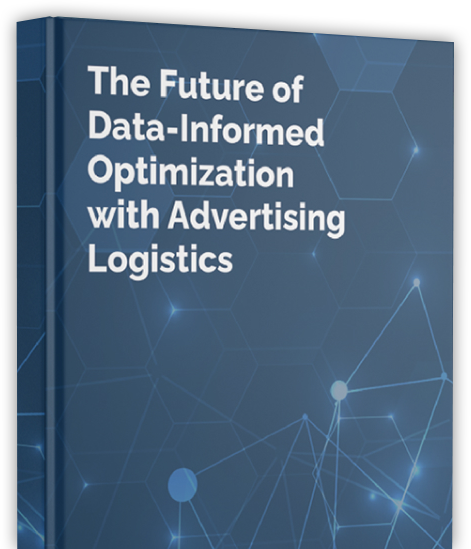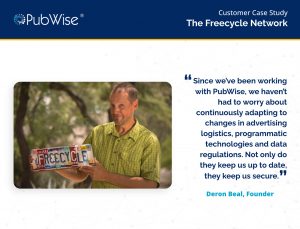Description
Decarbonization is in the news more than ever, and for good reason. But are some trying to take measurement of the ad industry’s carbon footprint a step too far for their own gain? In this episode, PubWise founder and CTO Stephen Johnston breaks down carbon emission measurement and the role of observability, AI and bid reduction strategies to solve this complex problem and expand the conversation among advertising technology professionals.
Transcript
Tony Winders: Hello, and welcome to another edition of On the SPOT. My name is Tony Winders. And today I’ll be speaking with PubWise Founder and CTO Stephen Johnston about recent industry news related to decarbonization in the advertising industry. Stephen, great to be with you again.
Stephen Johnston: Thanks for having me, Tony.
Tony Winders: I love these times when we can surf around and look at different news articles around a particular topic. This week, I just noticed that decarbonization and the environment were really front and center in a lot of the trade publications that we both read. We’ll put links to everything that we talk about today, but I’m looking at MediaPost in particular and one glance at the headline and you have the ad industry holding its first national dialogue on greenwashing that’s being led by the Institute for Advertising Ethics. Then in a related story, just in the same feed this week, the former head of OMD, who stepped down earlier this year, is going on to lead the US operations for Ad Net Zero. So it just seems like a lot of decarbonization and environmental stuff in the news this week and I thought it’d be good to bounce around and look at some of these and get your hot take on it.
Stephen Johnston: There’s sort of a theme with these first two as well, which is at least partly the definitions. Ad Net Zero is kind of looking at standards bodies, and this national dialogue on greenwashing is about standards and that sort of thing, and I think that’s really where we’re at: answering questions about what it means to decarbonize and in the case of this one, what does it mean to greenwash? We know what that is with food: when you get a bottle of water and it says, “No partially hydrogenated oils” or “Non GMO”. “0 trans fats” is the one I see on water and other weird products that would never have trans fats in them anyway. They’re just trying to put a healthy label on it in ways that aren’t meaningful. I think certainly, there’s work to do in defining those things, like what is meaningful impact versus window dressing that doesn’t really lead to the goal? And that sounds like what this dialogue is supposed to be from the Institute for Advertising Ethics. It’ll be interesting to follow and see what comes out of it.
Tony Winders: It seems appropriate at this stage of the game that these would be the kinds of headlines and activities happening. There were also some congressional hearings this week about the practices of independent agencies and PR firms that are being paid by the fossil fuel companies. I think that’s what triggered the MediaPost article in MediaDailyNews.
Stephen Johnston: These companies are coming out and they’re saying X, Y, and Z, and that maybe that has an impact. I think it’s always important to know the statistics. We had this focus on straws and paper straws, and then people ask, “Well, what’s the US’s actual contribution to that problem? How much of the plastics is the US putting into the ocean?” There’s a lot of things people do that are Cargo culty, or it’s being done because it seems popular. But as an industry and as a technical person and a person trying to build real solutions, then you want to know, where’s the real points of impact? Where’s the high leverage things we can do? Where’s the place where we can move big things? And that’s a little different than the public PR perception to the average consumer. For someone trying to create a business with real impact, like we are, where are the areas for real impact? And I think having a really honest conversation about that is critical so that everybody knows where to point their effort.
Tony Winders: I know you’ve expressed some skepticism around the total cost of ownership evaluation and being careful not to get caught up too much in all the hype, which ostensibly, some of this early stuff that we’re seeing feels very hypey and potentially greenwashing. But I know these companies, like Scope Three and Ad Net Zero, are doing their best to quantify this stuff. No disrespect to them, but it feels very early in our ability to actually quantify anything.
Stephen Johnston: Total cost of ownership is an infrastructure question. You can make a change here, and if all you focus on is that change, then maybe you’re being negative to something else. It’s important to understand that the steps along the journey aren’t the destination. And, I think part of this is maturity where we see a huge focus on reducing carbon without a calculation of some of the other things. Like in the case of electric vehicles, you can say, “Yes, now that car produces less carbon,” but it has other impacts. So, the total cost of ownership for the human race has to be all of the environmental impact. That is the mining, the steel, the parts of the battery, where do we let up? I don’t think we have to be cynical about that, so long as we continue to ask those questions so that we continue to push the conversation beyond it. Okay, where’s the next thing? That’s just not being satisfied with the steps along the way. If you’re climbing the face of a big rock climbing wall, you don’t celebrate at the third hole and if there’s 10 more to go. You have to get to the top. I think that’s critical. You could argue that all of this focus on electric vehicles is greenwashing and that the electric vehicle is essentially a coal powered vehicle. The coal plant may be more impactful, but it may be more efficient in some ways to use gas, or it may be differently efficient, so you can start to make calculations. But, its actual supply chain is not carbon neutral, and that’s where the UN has all these different scopes of focus. That’s part of how they’ve defined the journey. Look at your direct stuff; that’s the electric vehicle. Then, look at your secondary stuff; that’s looking at the power plant. Then, look at the whole thing, which would be how all those things are assembled and built. It’s a tough problem. It’s as complex as all the other logistics issues we’ve ever faced.
Tony Winders: Well, another article that we looked at was actually not in a trade publication, but I saw it on LinkedIn, which was from the current newsletter by The Trade Desk. They were talking about why supply path optimization is the sustainable choice for brands and planet Earth. I noticed you had commented on that post in LinkedIn to say, “Yeah, well, the opposite of supply path optimization is demand path optimization.” I’d love to hear your take on how those things meet in the middle. I thought it made perfect sense that The Trade Desk was taking that approach, but I like that you were hitting the DPO side of it as well.
Stephen Johnston: Well, we’ve taken a look at this whole conversation around, “What is supply path? What is demand path?” We’re calling that “advertising logistics” because I would like to shed this buy side or sell side bias that’s in the conversation and talk about how we can optimize the connectivity in the supply chain for better results. I would like for us to look at advertising logistics more fully. If decarbonization is the impetus, then fine, but I think there’s plenty of other things we’d like to know. How much carbon you are outputting could be one thing we could be leveraging in the advertising logistics and supply chain conversations to track. But you could also be looking at other things, like are you able to, as an intermediary, add value? What things did you do to this transaction? What did you add? What did you change along the way in order to improve its value? Of course, The Trade Desk is looking at it from a supply path optimization – they’re on the buy side. And, we would look at the same kind of thing and say, “But if a publisher is connected to twelve different demand side platforms, then they also need to optimize their demand path connections.” Those two things together are really the Holy Grail: a smart, efficient publisher technology making the right connections at the right time, configured in the right way to maintain revenue, connecting to a smart buy side system that’s doing the same kind of thing. Now, both of those systems can work in concert, in order to get everybody producing waste from the system. That’s where we really started on this conversation. Can we just not send as many bids? We looked at it as a latency question; we looked at it as a publisher improvement. If you’ve only got seven slots to do something, let’s have the right seven, and there’s hundreds that could be filling it. We looked at it as a technical thing. Now we’re looking at it saying, “the effect is that it reduces carbon output.” Someone using our technology sends less bids; less bids in the system means less consumption of everything. We’re doing it right. It’s like ripping a weed out from the root instead of running around cutting the tops off.
Tony Winders: In that conversation about sending fewer bid requests into the system is what led you to create the idea of advertising logistics, which I know you just released an eBook on the whole premise, and I think they kind of go hand in hand. You were speaking earlier about the ability to see what happens at every step in the process as like a package moving through a traditional logistics system and maybe tie advertising logistics back to the decarbonization initiatives of the ad industry. They seem to really go hand in hand, but I’d like to hear how you would characterize that.
Stephen Johnston: We’ve got some ideas. I would love to use this social focus on a problem that everyone’s identified, and there’s some rally around in both an industry economic sense and also a mission driven thing here as well, to deliver some real core functionality to all of the participants. If we can figure out a way to track everyone’s carbon impact to the transaction, then we’re going to solve all those other problems I’m interested in, like why don’t we have full observability? Why don’t we have full insight into who’s providing value and when? Why don’t we know what and, more importantly, why publisher inventory is being bought a certain way by a certain demand side? Right now, we infer a lot of that, just like companies like Scope3 are talking about inferring carbon impact. I think this is going to drive the question into really annotating bid requests with the information necessary to know the carbon impact. Once we have that infrastructure in place, we’ll be able to do other smart things with it.
Tony Winders: The other thing I noticed in the news this week, which was kind of cool, is that decarbonization and the environment are making their way into a word program. Digiday has the best sustainable ad tech platform, and we see Sharethrough as a finalist there for the launch of its green PMPs with Scope3. Congratulations to PubWise as well. I saw you were shortlisted for best application of ESG for The Wires Global awards 2022, in addition to being up for one of the best new products or services on the sell side, so that’s exciting. It’s just interesting that the world is waking up to the importance of sustainability in advertising. We read a stat that something like 3 percent of all carbon emissions are caused in some way related to digital media and advertising. That just feels very squishy as a number.
Stephen Johnston: I’m sure it’s squishy. We’ve always focused on things you can do-quantifiable percentage reductions. And because there’s a lot of focus on measurement and definition, if you’re at the source, and you’re reducing it, then whatever that measurement is on the other side, we know that we can reduce it as much as 40 percent. So, the measurement of it becomes a secondary consideration. If you’re producing 40 percent less trash or 40 percent less waste, then whatever the downstream impact of that waste is gone. I’m looking forward to better definitions in the industry. I’m looking forward to being a part of helping those definitions grow. But, where we sit at the source of bid requests, particularly in the header bidding, reducing them, managing them and shaping them just puts us in a really good position to have a meaningful impact without necessarily having to know all the details. We can focus on revenue; we can focus on reduction of bid volume, while maintaining revenue, and all of the players now win. And that’s where the win-win-win is, from my perspective.
Tony Winders: It’s great that you’re part of that conversation in the industry because clearly PubWise is reducing the amount of waste that’s going into the programmatic system. I trust that you’ll get all of the respect and credibility that goes along with that, and we’ll look forward to helping tell that story. But for right now, I guess we’ll have to leave it there for this episode of On the SPOT. I’m Tony Winders. We’ve been speaking with Stephen Johnston, Founder and CTO of PubWise. For more of Stephen’s insight on programmatic tech and its impact on the environment, please visit our blog at pubwise.io. And we’ll see you all next time. Thanks, Stephen.
Stephen Johnston: Thanks. Have a good one.
EPISODE NOTES
https://exchangewire.secure-platform.com/a/page/wires/shortlist-2022





